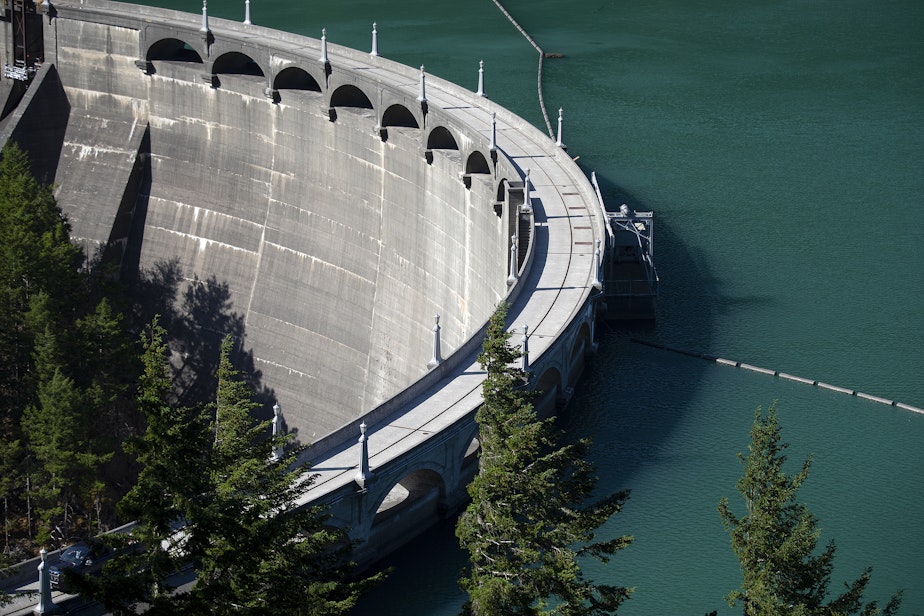Washington once saw hydropower as an easy alternative to coal. That's changing

From the Diablo Dam on the Skagit River to the Boundary Dam on the Pend Oreille River, for more than a hundred years, Washington state has relied on these sites for power.
In 2022, hydropower was responsible for two-thirds of the energy the state uses to light homes and businesses, but climate change is making hydropower less reliable.
"Soundside" host Libby Denkmann spoke with Seattle Times staff reporter Isabella Breda about the changing relationship between hydropower, the utility companies that once saw it as an easy alternative to coal, and the carbon we put into the atmosphere.
RELATED: Seattle City Light shuts down hydroelectric dams as wildfire nears
The Pacific Northwest is currently facing an exceptionally dry summer, with drought conditions affecting much of our region. When it comes to how that affects our power grid, Breda says utility power managers looked at conditions throughout the spring and turned to a unlikely partner: California.
"Utility managers kind of had to think on their feet and pivot where they might have seen, 'OK, we've got this great snowpack and March, things are looking normal or average about what we've seen in the past.'" Breda said. "But because the snowpack came [and] went really quickly, there wasn't the precipitation to fill up Ross Lake. They had to look elsewhere for other energy sources that weren't going to, you know, unfairly burden ratepayers."
California experienced an abnormally wet winter and spring, and Breda says that meant lakes throughout the state that had been dried up for years were suddenly full and ready to produce electricity.
Sponsored
In 2022, hydropower made up about 67% of Washington's total energy generation. It's been seen as a cheap, renewable electricity source, Breda says. But as our planet warms due to the effects of climate change, snow pack across Washington just isn't what it used to be.
"We can't quite rely on hydropower the way we used to, but that doesn't mean the electricity is not available," Breda said. "Sometimes it's a timing issue. It's not there when you'd expect it to be. Sometimes it's an issue of being able to have backup power available, battery storage, pumped hydro, other forms of storage available."
When it comes to looking at the big picture of Washington state's goals in meeting clean energy goals set by Governor Jay Inslee and state leaders, Breda says hydropower "will be a cornerstone of Washington's clean energy transition, but it can't stand on its own."
Listen to the full segment above.





